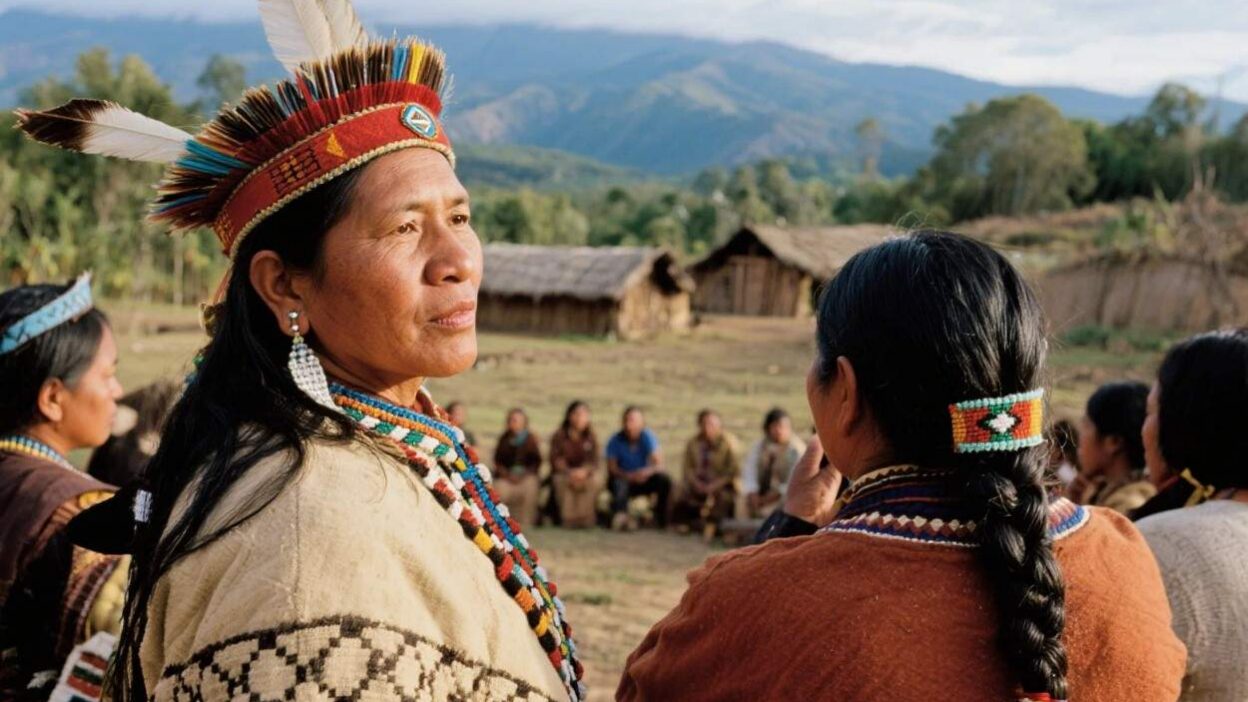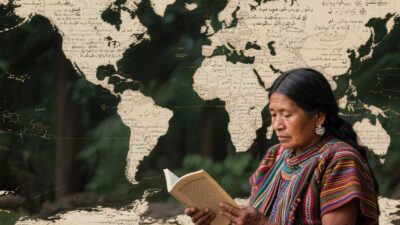Reclaiming Autonomy and Cultural Sovereignty
The Imperative of Decentralized Governance for Indigenous Communities
For centuries, Indigenous communities have navigated governance through communal, cultural, and land-based systems—structures deeply rooted in their identities, traditions, and connection to the land. Yet, colonialism, extractionist policies, and centralized state control have eroded these systems, leaving many Indigenous peoples marginalized, dispossessed, and excluded from decision-making over their own lives. Today, as global movements for equity and self-determination gain momentum, decentralized governance models—which prioritize community-led decision-making, cultural preservation, and local autonomy—are emerging as a critical framework for Indigenous communities to reclaim sovereignty. This article explores how these models work, their potential to transform Indigenous governance, and the challenges to their widespread adoption.
What Are Decentralized Governance Models for Indigenous Communities?
Decentralized governance for Indigenous communities shifts power from external authorities (e.g., national governments, colonial institutions) to local, community-based structures that reflect Indigenous values, knowledge, and traditions. Unlike top-down, hierarchical systems, these models emphasize:
- Self-Determination: Communities design and implement governance structures that align with their cultural norms, priorities, and needs.
- Cultural Sovereignty: Governance is rooted in Indigenous worldviews, such as collective decision-making, intergenerational knowledge, and stewardship of land and resources.
- Participatory Democracy: All community members—regardless of age, gender, or status—have a voice in shaping policies that affect their lives.
These models reject the colonial legacy of imposed governance (e.g., reserves, tribal councils) and instead center Indigenous agency, resilience, and cultural continuity.
Why Decentralized Governance Matters: Addressing Historical and Systemic Inequities
Indigenous communities face systemic barriers to justice, including:
- Dispossession of Land: Over 70% of Indigenous lands globally are under state or corporate control, often without free, prior, and informed consent (FPIC).
- Marginalization in Decision-Making: Central governments frequently exclude Indigenous voices from policies affecting their territories, resources, and rights.
- Cultural Erosion: Colonial education, legal systems, and media have devalued Indigenous knowledge, languages, and traditions.
Decentralized governance directly addresses these inequities by:
1. Restoring Control Over Land and Resources
By placing governance in community hands, decentralized models empower Indigenous peoples to manage their lands sustainably. For example:
- In Canada, the Nisga’a Nation (British Columbia) exercises self-government under the Nisga’a Treaty (1998), allowing them to regulate land use, fisheries, and natural resources without federal interference.
- In Australia, Native Title laws recognize Indigenous land rights, enabling communities to negotiate with governments and corporations over resource extraction on their territories.
2. Preserving Cultural Identity
Decentralized governance integrates Indigenous knowledge systems into decision-making. For instance:
- The Maori of New Zealand use whānau (extended family) and hapū (sub-tribal) structures to guide governance, ensuring that cultural values like kaitiakitanga (environmental stewardship) shape policy.
- In Bolivia, the Plurinational State constitution (2009) recognizes 36 Indigenous nations, mandating their participation in legislation and governance through cabildos (traditional councils).
3. Fostering Community Cohesion
By prioritizing participatory processes, decentralized models build trust and unity. In Ecuador, the Kichwa communities of the Amazon use asambleas comunitarias (community assemblies) to debate and approve development projects, ensuring that decisions reflect collective needs rather than external interests.
Case Studies: Decentralized Governance in Action
1. Canada: First Nations Self-Government
Under the Indian Act (1876), Canada imposed paternalistic governance on First Nations, controlling their lands, resources, and even daily life. Today, over 200 First Nations have signed self-government agreements (SGAs), such as the Sechelt Indian Band (British Columbia), which allows them to:
- Enact local laws (e.g., zoning, child welfare).
- Manage natural resources (e.g., forestry, fisheries).
- Collect taxes and distribute revenue locally.
These agreements have reduced poverty, improved education outcomes, and strengthened cultural identity, according to a 2022 report by the National Centre for Truth and Reconciliation.
2. Australia: Indigenous Land Councils
Australia’s Aboriginal Land Rights (Northern Territory) Act (1976) established Land Councils to represent Aboriginal communities in land claims. These councils, governed by Indigenous members, negotiate with governments and corporations over mining, pastoralism, and conservation. For example, the Central Land Council has successfully secured land rights for the Anangu people of Uluru, ensuring their role in managing the iconic landmark.
3. Latin America: Bolivia’s Indigenous Autonomy
Bolivia’s 2009 constitution recognized Indigenous peoples as “distinct nations” and granted them autonomy to self-govern. The Department of La Paz now has Gobiernos Municipales Indígenas (Indigenous Municipal Governments), which:
- Develop local budgets and infrastructure projects.
- Regulate land use in line with Indigenous cosmology (e.g., protecting sacred sites).
- Provide culturally relevant services (e.g., bilingual education, traditional healthcare).
Challenges: Scaling Decentralized Governance
While promising, decentralized models face significant hurdles:
1. Legal and Political Resistance
Central governments often resist ceding power, fearing loss of control over resources or revenue. For example, in Peru, Indigenous communities fighting for land rights have faced violent repression by state forces and mining corporations.
2. Capacity Gaps
Many Indigenous communities lack the technical or administrative capacity to design and implement governance structures. This is compounded by underfunded education systems and limited access to legal resources.
3. External Pressures
Corporations, NGOs, and international actors may co-opt decentralized processes to advance their own agendas (e.g., extractive industries exploiting “community consent” for resource extraction).
4. Balancing Tradition and Modernity
Decentralized models must integrate traditional governance with modern tools (e.g., digital platforms for voting, data management) to remain effective. For example, the Sámi of Norway use siida (traditional reindeer-herding communities) alongside digital tools to manage land use and advocate for climate policies.
The Future: Strengthening Decentralized Governance
The future of decentralized governance for Indigenous communities hinges on:
- Legal Recognition: Strengthening international frameworks like the UN Declaration on the Rights of Indigenous Peoples (UNDRIP) to enforce self-determination and FPIC.
- Capacity Building: Investing in training programs for Indigenous leaders, lawyers, and administrators to navigate governance systems.
- Technology for Inclusion: Developing digital tools (e.g., mobile apps, online voting platforms) to enhance participation, especially for remote communities.
- Solidarity Networks: Supporting cross-border alliances (e.g., the Indigenous Environmental Network) to share best practices and advocate for collective rights.
Reclaiming Sovereignty Through Decentralized Governance
Decentralized governance models are not just a political tool—they are a reclamation of Indigenous identity, resilience, and sovereignty. By centering community voices, cultural knowledge, and land rights, these models offer a path to justice, equity, and sustainability for Indigenous peoples worldwide.
As the United Nations Special Rapporteur on the Rights of Indigenous Peoples has stated, “Decentralization is not an end in itself, but a means to ensure that Indigenous peoples can exercise their right to self-determination in ways that respect their unique cultures, histories, and aspirations.” For Indigenous communities, this is more than a governance model—it is a declaration of dignity, resilience, and hope for future generations.



